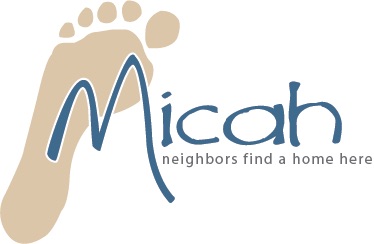There was so much snow that people couldn’t walk on the sidewalks without it swallowing their knee caps. Cars rumbled over the iced city streets as if they were four-wheeling on a back road in the country. Schools closed for almost two weeks; and most people didn’t dare to venture away from their hot chocolate mug and warm fireplace.
Such an event was that winter of 2009 that CNN even perched itself in downtown Fredericksburg to capture what happens when the world turns white. But right under their noses, an untold story of that winter storm was unraveling.
The weather events that shut most workplaces down are anything but a holiday in homeless services. Much like the fire department, police or Federal Emergency Management Agency, duty calls and our staff is there.
During the storm, a small but significant crowd of our community homeless huddled in the lobby at Micah for days on end. Volunteers within walking distance unbelievably ensured the gathered crew didn’t go without something to eat. And our guests weathered the storm together with sleeping bags on the floor.
But not all of those without homes in our community came indoors when the snow was coming down. Our most experienced–those who understood what happens to tents when heavy snow piles on top of them–stayed behind in their campsites to protect their belongings. They took turns throughout the night, keeping the propane heaters going and beating the snow off the protective tarps. Only when the flakes finally stopped did they emerge from the woods and allow our volunteers in four-wheel drive vehicles to carry them to safety.
Winter services at Micah have changed quite a bit since those days, when the cold weather shelter only opened at 32 degrees and below. With the community’s help we have eliminated an opening temperature, settled into a permanent building, and changed the very face of people needing to access a shelter on the winter’s coldest nights.
In my first few years with the cold weather shelter, the same 50 plus individuals piled onto cots in the Bragg Hill Family Life Center gymnasium. Year after year, these generally older males with drinking problems, mental health issues and a laundry list of illnesses kept coming back. The only change in their lifestyle was that they kept getting sicker. If they didn’t return, it usually was a sign that something bad had happened–jail, hospitalization or even death.
Today, our staff anxiously awaits the opening of the cold weather shelter, as the faces that don’t show up are our signal of how good a job we did throughout the year in getting people stabilized in permanent housing. Our numbers have been drastically lower these last few years with nightly averages hovering in the high 20s and low 30s. Keep in mind that the most experienced homeless often still choose to stay alone in their camp rather than joining the crowd at the shelter. But our sources, the many long-time homeless who have already been stabilized in housing, tell us that there aren’t too many of that old school group remaining outside either.
So, we’ve wondered going into this cold weather season, what would it take to get us to zero by the time we look open the shelter in the winter 2014? Here’s what the numbers say:
While Micah serves as many as 1,200 people per year, the average active client base ranges between 250 and 300 people per month. Use of our services can be as infrequent as one day and sporadically throughout the month. Or they can be as consistent as a daily visit for a number of years.
By our calculations, an average of 140 people are consistently active in our homeless system. Just 44 of those individuals have been homeless more than one year and 17 have been homeless between six and twelve months.
We are 61 people away from eliminating winters where we fret the well-being of those who have no home. Sixty-one people away from reducing the average length of homelessness And 61 households away from clearing our community streets of chronic homelessness. Are you going to help us get there?
